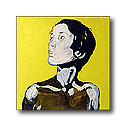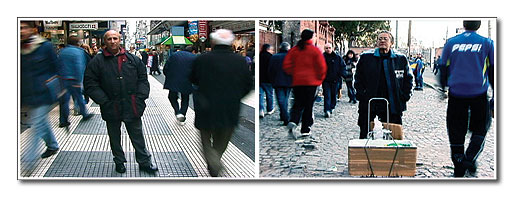El Museo del Barrio,
Aug 31, 2005 - Jan 26, 2006
New York, NY, USA
Reclaiming spaces: El Museo's Biennial / The S (Selected) Files 2005
by Ariadna Capasso and Diana Korchak
The fourth edition of El Museo’s Biennial / The S (Selected) Files, on view at El Museo del Barrio through January 26, 2006, features works by forty mid-career and emerging Latino and Latin American artists living in New York and surroundings. Deborah Cullen from El Museo del Barrio and Miki García from the Santa Barbara Contemporary Arts Forum selected the majority of the works, while Marysol Nieves (Museo de Arte de Puerto Rico) curated a special section on new art from the Puerto Rico. The S (Selected) Files presents a panorama of Latino art in New York today. The biennial features an array of artistic expressions that go from traditional to new media, from conceptual to image-centered works. Within this multiplicity, issues of gender, race, immigration, and a retrieval of the cultural heritage seem to recur in many of the works. Examples of the latter are Cristina Hernández-Botero’s light boxes with gold pigment from her native Colombia and Carlos Aponte’s hieroglyphs reminiscent of ancient cultures. Most interesting of all, though, was a conceptual thread that, though not evident at first glance, appeared under closer scrutiny. Here we are referring to the conscious appropriation and subsequent subversion of verbal and visual codes culled from the artists’ immediate environs. These small acts of defiance are seen in artists that follow in the long tradition of figurative art from Latin America; in her loving portraits of women, Patricia Cazorla reclaims the female body from the male gaze, while David Antonio Cruz’s self-portraits debunk stereotypes surrounding Latin machismo. Shifting media, Nancy Friedemann painstakingly creates large-scale ink drawings on mylar that resemble lace. The Colombian artist paradoxically rebels against the bonds of traditional feminine labors with obsessive labor. Using a different aesthetic vocabulary, the videos Señor Cambio and Gaseosa Fría by Caraballo-Farman portray in an endless loop the futile labor of street merchants who, abandoned by the market economy, try to sell their products in Argentina. Quintín Rivera-Toro, one of the artists selected by Marysol Nieves, covered the advertisement billboards along his native city’s highways with gigantic photographs of the sky. Un espacio libre is a public art project aimed at beautifying the city of Caguas, Puerto Rico while challenging consumerism. Whereas the billboards that clog the visual horizon of Caguas offer the highway drivers various manufactured goods, Rivera-Toro emphasizes that the most beautiful and essential product of all is one that is free and, not for long, before our very eyes: Nature.
|













